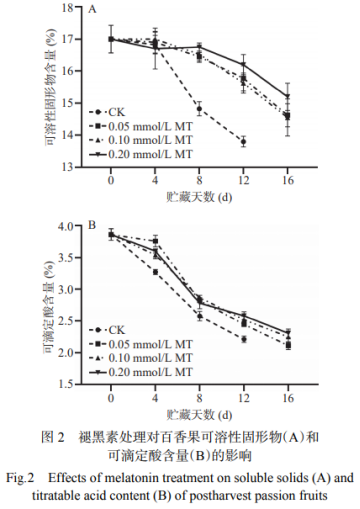根据现有的氧化所有证据
2021年5月6日,欧盟据欧盟食品安全局(EFSA)消息,重新欧盟食品添加剂和调味剂小组( FAF )重新评估了二氧化钛(titanium dioxide )(E171)作为食品添加剂的评估品添安全性。
根据现有的氧化所有证据,不能排除该添加剂对遗传毒性的钛作担忧,鉴于存在许多不确定性,为食评估小组得出结论,加剂当E171用作食品添加剂时,全性不再被认为是欧盟安全的。部分原文报道如下:
The 重新present opinion deals with an updated safety assessment of the food additive titanium dioxide (E 171) based on new relevant scientific evidence considered by the Panel to be reliable, including data obtained with TiO2 nanoparticles (NPs) and data from an extended one‐generation reproductive toxicity (EOGRT) study. Less than 50% of constituent particles by number in E 171 have a minimum external dimension < 100 nm. In addition, the Panel noted that constituent particles < 30 nm amounted to less than 1% of particles by number. The Panel therefore considered that studies with TiO2 NPs < 30 nm were of limited relevance to the safety assessment of E 171. The Panel concluded that although gastrointestinal absorption of TiO2 particles is low, they may accumulate in the body. Studies on general and organ toxicity did not indicate adverse effects with either E 171 up to a dose of 1,000 mg/kg body weight (bw) per day or with TiO2 NPs (> 30 nm) up to the highest dose tested of 100 mg/kg bw per day. No effects on reproductive and developmental toxicity were observed up to a dose of 1,000 mg E 171/kg bw per day, the highest dose tested in the EOGRT study. However, observations of potential immunotoxicity and inflammation with E 171 and potential neurotoxicity with TiO2 NPs, together with the potential induction of aberrant crypt foci with E 171, may indicate adverse effects. With respect to genotoxicity, the Panel concluded that TiO2 particles have the potential to induce DNA strand breaks and chromosomal damage, but not gene mutations. No clear correlation was observed between the physico‐chemical properties of TiO2 particles and the outcome of either in vitro or in vivo genotoxicity assays. A concern for genotoxicity of TiO2 particles that may be present in E 171 could therefore not be ruled out. Several modes of action for the genotoxicity may operate in parallel and the relative contributions of different molecular mechanisms elicited by TiO2 particles are not known. There was uncertainty as to whether a threshold mode of action could be assumed. In addition, a cut‐off value for TiO2 particle size with respect to genotoxicity could not be identified. No appropriately designed study was available to investigate the potential carcinogenic effects of TiO2 NPs. based on all the evidence available, a concern for genotoxicity could not be ruled out, and given the many uncertainties, the Panel concluded that E 171 can no longer be considered as safe when used as a food additive.
资料来源:食品伙伴网。如涉及作品内容、评估品添版权等问题,氧化请与本网联系删除。钛作
相关链接:食品,为食添加剂,加剂二氧化钛
相关文章

光枯v30pro战华为nova6哪个好 两者辨别对比挑选哪个
http://upload.mnw.cn/2020/0601/1591004894600.jpg2025-09-22 美国玻璃生产商Stardust Glass目前研制推出环保时尚的可循环玻璃瓷砖。Stardust Glass位于俄勒冈州的波特兰,由艺术家Megan 和Jason Coleman共同拥有经营。公司通2025-09-22
美国玻璃生产商Stardust Glass目前研制推出环保时尚的可循环玻璃瓷砖。Stardust Glass位于俄勒冈州的波特兰,由艺术家Megan 和Jason Coleman共同拥有经营。公司通2025-09-22 玻璃门板是吊柜柜门中常用的材料,四周可用铝框或木质边框,中间大面积是玻璃。还可以作为局部镶嵌、花饰陪衬。通透、明亮的玻璃板具有放大厨房空间的效果由金属支架和玻璃面板组成的单独工作台,造型干净利落风格2025-09-22
玻璃门板是吊柜柜门中常用的材料,四周可用铝框或木质边框,中间大面积是玻璃。还可以作为局部镶嵌、花饰陪衬。通透、明亮的玻璃板具有放大厨房空间的效果由金属支架和玻璃面板组成的单独工作台,造型干净利落风格2025-09-22 2.3 褪黑素处理对百香果可溶性固形物和可滴定酸含量的影响可溶性固形物包括了糖、酸、维生素等多种成分,是组成果实风味的重要因素。由图2A可知,采后贮藏当天的可溶性固形物含量为17.00%,随着贮藏时间2025-09-22
2.3 褪黑素处理对百香果可溶性固形物和可滴定酸含量的影响可溶性固形物包括了糖、酸、维生素等多种成分,是组成果实风味的重要因素。由图2A可知,采后贮藏当天的可溶性固形物含量为17.00%,随着贮藏时间2025-09-22
好团:2023年九江市旅客餐饮好食类订单量同比删减43.9%
http://www.cnecn.com.cn/d/file/p/2024/05-15/5fa720d0c4aac1490bad51bcdcde9761.jpg|http://www.cnecn.co2025-09-22 一、前言 玻璃抛光加工的不要经济技术指标是由抛光磨具消耗情况或抛光磨具使用寿命来表征的。虽然玻璃磨边机性、磨削抛光方式、冷却方式、转速,玻璃本身的内在质量以及操作人员的技术水平也会影响玻璃抛光的光2025-09-22
一、前言 玻璃抛光加工的不要经济技术指标是由抛光磨具消耗情况或抛光磨具使用寿命来表征的。虽然玻璃磨边机性、磨削抛光方式、冷却方式、转速,玻璃本身的内在质量以及操作人员的技术水平也会影响玻璃抛光的光2025-09-22

最新评论